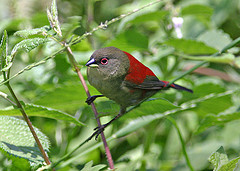 W
WThe Abyssinian crimsonwing, also known as the Ethiopian crimsonwing, Salvadori's crimsonwing or crimson-backed forest finch, is a common species of estrildid finch found in eastern Africa. It has an estimated global extent of occurrence of 190,000 km².
 W
WThe Esmeraldas antbird is a species of bird in the family Thamnophilidae. It is found in Colombia and Ecuador. Its natural habitats are subtropical or tropical moist lowland forests and subtropical or tropical moist montane forests.
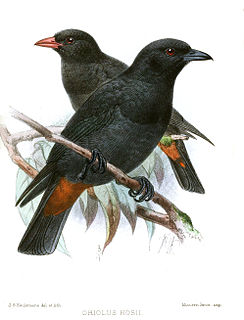 W
WThe black oriole is a species of bird in the family Oriolidae. It is endemic to the island of Borneo. One of the least known of the orioles, its distribution range is restricted to Sarawak in Borneo. Along with the black-and-crimson, maroon, and silver orioles, it belongs to a clade of red and black orioles. The binomial name is after Charles Hose who collected the first specimen of the species on Mount Dulit.
 W
WThe black-browed bushtit or black-browed tit is a species of bird in the family Aegithalidae. It is found in mid-southern China and sporadically in Myanmar. Its natural habitats are boreal forests and temperate forests. It was formerly considered conspecific with the rufous-fronted tit of the central and eastern Himalayas but is now often regarded as a separate species. Sometimes the subspecies A. b. sharpei of western Burma is also treated as a species.
 W
WThe black-crowned antshrike or western slaty antshrike is a species of bird in the family Thamnophilidae. It is found in from western Ecuador, western Colombia, western Venezuela, and Central America as far north as Belize.
 W
WThe Bolivian earthcreeper is a species of bird in the family Furnariidae. It is endemic to Bolivia.
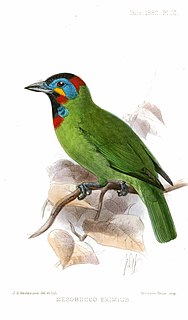 W
WThe Bornean barbet is a species of bird in the Megalaimidae family. It is found in Indonesia and Malaysia where it is endemic to the island of Borneo. Its natural habitats are subtropical or tropical moist lowland forests and subtropical or tropical moist montane forests.
 W
WThe Cameroon greenbul is a species of the bulbul family of passerine birds. It is found in the Cameroonian Highlands forests. It is becoming rare due to habitat loss.
 W
WThe Cameroon sunbird is a species of bird in the family Nectariniidae. It is found in the Cameroon line.
 W
WThe Chatham coot, also known as the Chatham Island coot, is an extinct bird in the rail family, Rallidae, that was endemic to the Chatham Islands of New Zealand. It was described from subfossil bones in 1892 by Scottish explorer, ornithologist and botanist Henry Forbes, who was director of the Canterbury Museum in Christchurch at the time.
 W
WChubb's cisticola is a species of bird in the family Cisticolidae. It is found in Cameroon, Kenya, Uganda and the Albertine Rift montane forests.
 W
WThe cinnamon-chested bee-eater is a species of bird in the family Meropidae. They are found in Burundi, Democratic Republic of the Congo, Ethiopia, Kenya, Rwanda, South Sudan, Tanzania, and Uganda.
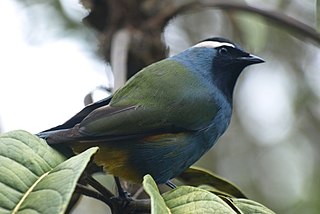 W
WThe crested berrypecker or eastern crested berrypecker is a species of bird in the family Paramythiidae. It is found in New Guinea. Its natural habitat is subtropical or tropical moist montane forests.
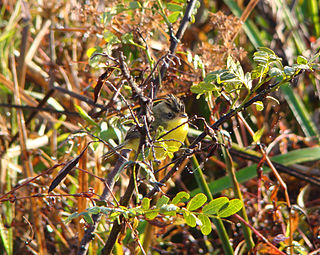 W
WThe crested doradito is a species of bird in the family Tyrannidae.
 W
WThe Dulit frogmouth is a little-known species of bird in the frogmouth family, Podargidae, with a patchily recorded distribution in the mountain forests of northern and central Borneo to which it is endemic. The species is monotypic.
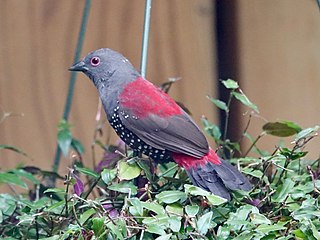 W
WDybowski's twinspot is a common species of estrildid finch found in Africa. It has an estimated global extent of occurrence of 450,000 km².
 W
WThe Enggano thrush is a species of bird in the family Turdidae. It is endemic to rainforests on Enggano Island off Sumatra in Indonesia. It has traditionally been considered a subspecies of the chestnut-capped thrush.
 W
WEverett's thrush is a species of bird in the family Turdidae. The name commemorates British colonial administrator and zoological collector Alfred Hart Everett.
 W
WThe Gough moorhen is a medium-sized, almost flightless bird that is similar to the common moorhen, but is smaller, stockier, and has shorter wings. The bird has a distinctive yellow-tipped red bill and red frontal shield. Its first account was written in 1888 by the polar explorer George Comer, whom the specific name comeri commemorates. This bird is found only on two remote islands in the South Atlantic.
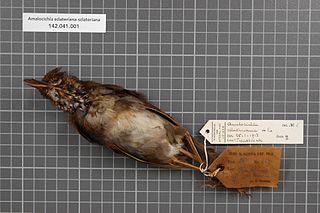 W
WThe greater ground robin is a species of bird in the family Petroicidae. It is found in New Guinea.
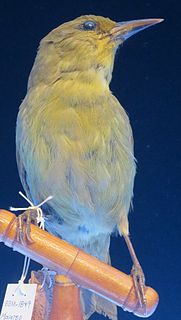 W
WThe greater ʻamakihi was a species of Hawaiian honeycreeper in the subfamily Carduelinae of the family Fringillidae.
 W
WThe greater koa finch was a species of finch in the family Fringillidae. It was found only in the Hawaiian Islands. It has been extinct since the late 19th century.
 W
WThe green longtail is a bird species of the family Cisticolidae, in the monotypic genus Urolais. It is found in the Cameroon line. Its natural habitats are subtropical or tropical moist montane forest and dry savanna.
 W
WThe green-breasted bushshrike is a species of bird in the family Malaconotidae. It is found in the Cameroonian Highlands forests.
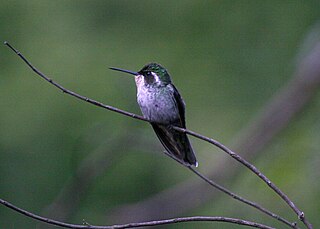 W
WThe green-breasted mountaingem is a species of hummingbird in the family Trochilidae.
 W
WThe grey-headed greenbul, or grey-headed yellow-bellied greenbul, is a species of songbird in the bulbul family, Pycnonotidae. It is found in the Cameroonian Highlands forests.
 W
WThe grey-winged robin-chat or grey-winged akalat is a bird in the family Muscicapidae. The species was first described by Anton Reichenow in 1892.
 W
WThe Hainan partridge is a species of bird in the family Phasianidae. It is endemic to Hainan Island, China. Its natural habitats are primary evergreen forests. It is threatened by habitat loss and has been assessed as a vulnerable species.
 W
WHawkins' rail or the giant Chatham Island rail, Diaphorapteryx hawkinsi, was a flightless extinct bird endemic to the Chatham Islands south of New Zealand. It is known to have existed only on the main islands of Chatham Island and Pitt Island. It is largely known from skeletal remains found in the kitchen middens of the original Polynesian inhabitants, the Moriori.
 W
WHose's broadbill is a species of bird in the family Calyptomenidae. It was named after zoologist Charles Hose. It is endemic to highland forests in northern Borneo. It is threatened by habitat loss. It has a blue belly, but otherwise it resembles the other members of the genus Calyptomena.
 W
WThe Laysan duck, also known as the Laysan teal, is a dabbling duck endemic to the Hawaiian Islands. Fossil evidence reveals that Laysan ducks once lived across the entire archipelago, but today survive only on Laysan Island and two atolls. The duck has several physical and behavioral traits linked to the absence of ground-based predators in its habitat. By 1860, the ducks had disappeared from everywhere except Laysan Island. The introduction of rabbits brought the bird to the brink of extinction in 1912 with twelve surviving individuals. Rabbits were eradicated from the island in 1923 and numbers of Laysan ducks began to rise, reaching 500 by the 1950s. In an effort to ensure the long-term future of this duck, 42 birds were translocated to Midway Atoll National Wildlife Refuge in 2002. These thrived in their new surroundings, and another group were later relocated to Kure Atoll.
 W
WThe Laysan honeycreeper or Laysan ʻapapane was an extinct bird species that was endemic to the island of Laysan in the Northwestern Hawaiian Islands.
 W
WThe Laysan millerbird was a subspecies of the millerbird, similar in appearance to the remaining subspecies, the Nihoa millerbird. Its dorsal side was brown, and its belly was grayish. Its name derives from its favorite food, several species of moths of the genus Agrotis commonly referred to as "millers".
 W
WThe Laysan rail or Laysan crake was a flightless bird endemic to the Northwest Hawaiian Island of Laysan. This small island was and still is an important seabird colony, and sustained a number of endemic species, including the rail. It became extinct due to habitat loss by domestic rabbits, and ultimately World War II.
 W
WThe lesser koa finch is an extinct species of Hawaiian honeycreeper.
 W
WThe Mantanani scops owl, is a small owl in the scops-owl genus Otus found on small islands between Borneo and the Philippines. It is listed by the IUCN as "near threatened" because its range is limited with its population being fragmented on several different islands, and its forest habitat is being degraded by ongoing logging and clearance.
 W
WThe millerbird is a species of Old World warbler in the family Acrocephalidae. It has two subspecies, A. f. kingi and A f. familiaris. The latter, the Laysan millerbird, became extinct sometime between 1916 and 1923. The former, the critically endangered Nihoa millerbird, remains the only race left, inhabiting the small island Nihoa in Hawaiʻi, though it has since been reintroduced to Laysan. It is the only Old World warbler to have colonised Hawaiʻi, although there is no fossil evidence that the species ever had a distribution beyond these two islands.
 W
WThe pale white-eye also known as Kenya white-eye is a bird species in the family Zosteropidae. It is found in central and eastern Kenya and in eastern Tanzania.
 W
WThe Peruvian seaside cinclodes or surf cinclodes is a species of bird in the family Furnariidae. It is endemic to rocky shorelines in Peru. It is often considered a subspecies of the Chilean seaside cinclodes.
 W
WThe pygmy white-eye, also known as the pygmy ibon, is a species of bird in the white-eye family Zosteropidae.
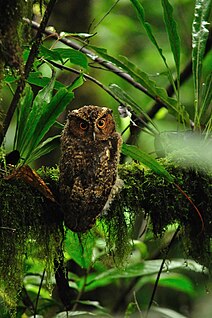 W
WThe Rajah scops owl is found in Borneo and Sumatra. There are two subspecies namely Otus brookii brookii found in Borneo and Otus brookii solokensis found in Sumatra. The bird is named after James Brooke, Rajah of Sarawak.
 W
WThe red-faced barbet is a species of bird in the African barbet family Lybiidae. It is found in Burundi, Rwanda, Northwest Tanzania, and Southwest Uganda. Its natural habitats are dry savanna, moist savanna, and arable land. It is threatened by habitat loss.
 W
WThe São Tomé shorttail, also known as Bocage's longbill, is a species of passerine bird in the family Motacillidae. It has been classified as the sole member of the genus Amaurocichla, but a 2015 phylogenetic study placed it in the genus Motacilla. It is endemic to the central and southern parts of the island of São Tomé. Its natural habitat is subtropical or tropical moist lowland forests. This species has a small population and is threatened by habitat loss.
 W
WThe Sumatran frogmouth, also known as the short-tailed frogmouth is a bird in the family Podargidae. It is endemic to the island of Sumatra in Indonesia. It was formerly considered conspecific with the Bornean frogmouth.
 W
WThe slender-tailed nightjar is a species of nightjar in the family Caprimulgidae. It is found in Democratic Republic of the Congo, Ethiopia, Kenya, Somalia, South Sudan, Tanzania, and Uganda.
 W
WThe southern yellow white-eye is a bird species in the family Zosteropidae. It is found in parts of southern Africa. It was formerly considered conspecific with the African yellow white-eye.
 W
WThe spotted nightjar is a species of nightjar in the family Caprimulgidae. It inhabits much of mainland Australia and has also been found in several Indonesian islands. Its natural habitats are open forests and woodlands, scrub, spinifex and tussock grassland, savannah woodland and mangroves.
 W
WThe streak-throated hermit, also known as the Rupurumi hermit, is a species of hummingbird in the family Trochilidae. It was formerly considered a subspecies of the dusky-throated hermit. The streak-throated hermit is found in forest, woodland and dense shrub in north-eastern South America. It has two subspecies; the nominate subspecies is found in south-eastern Venezuela, west-central Guyana, and the extreme northern Brazil Amazon Basin, and the subspecies amazonicus is found near the lower Amazon River in the river corridor in Brazil's eastern Amazon Basin, as well as upstream, some distance along the Tapajos River corridor.
 W
WThe Sulawesi fantail is a species of bird in the family Rhipiduridae. It is endemic to Sulawesi in Indonesia. Its natural habitats are subtropical or tropical moist lowland forests and subtropical or tropical moist montane forests.
 W
WThe Sumatran babbler is a species of bird in the family Pellorneidae.
 W
WThe tawny-collared nightjar is a species of nightjar in the family Caprimulgidae. It is endemic to Mexico. Its natural habitat is subtropical or tropical dry forests.
 W
WThe Tibetan snowfinch or Henri's snowfinch is a species of bird in the sparrow family.
 W
WTullberg's woodpecker is a species of bird in the family Picidae. It is found in western Cameroon, adjacent Nigeria and Bioko island.
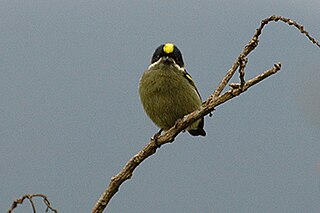 W
WThe western tinkerbird is an African barbet native to Central Africa, where it has been recorded at altitudes from 900 to 3,030 m.
 W
WXavier's greenbul is a species of songbird in the bulbul family, Pycnonotidae. It is found in central Africa. Its natural habitats are subtropical or tropical dry forests and subtropical or tropical moist lowland forests.
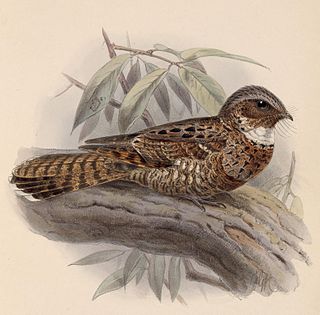 W
WThe Yucatan poorwill is a species of nightjar in the family Caprimulgidae. It is found in the entire Yucatán Peninsula region except on the north coast, in a 50 km wide coastal strip that extends 700 km; the species ranges to south-central Belize, northeasternmost Guatemala, and southern regions Mexico. Its natural habitats are subtropical or tropical dry forests and subtropical or tropical dry shrubland.